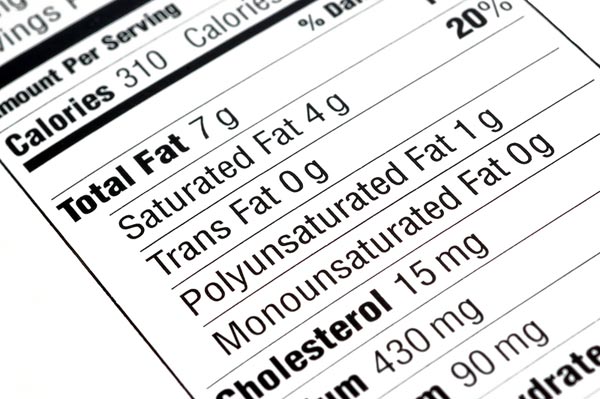How New Nutrition Labels Could Change Your Food

The U.S. government's proposed changes to nutrition labels are an important and positive step, and could even spur food companies to give consumers healthier options, but the changes are only part of what's needed to stem the obesity epidemic, public health experts say.
Today (Feb. 27), the Food and Drug Administration announced plans to update nutrition labels to better reflect the latest nutrition science, and the growing understanding of the link between diet and chronic diseases, the agency said. The changes include making more realistic serving sizes, and including "added sugar" amounts on the label. [New Nutrition Labels: 5 Big Changes to Look For]
The proposal comes as a growing number of Americans say they read nutrition labels. About 54 percent of U.S. consumers said they read these labels "often" in 2008, up from 44 percent in 2002, according to FDA statistics. Experts generally reacted positively to the proposed labels.
"I don't think we can oversell the Nutrition Facts panel as the end-all-be-all of getting people to eat more healthfully, but it's certainly a step in the right direction," said Dr. Jason Block, an assistant professor of population medicine at Harvard Medical School.
Experts especially liked the idea of changing serving sizes on products that could be consumed in one sitting, so that the whole product is considered a single serving. For example, under the proposal, both 12- and 20-ounce bottles of soda would be considered one serving, because people usually drink the whole bottle in either case, the FDA said.
"It's very easy to scan a label and not realize there are multiple servings," said Christina A. Roberto, a psychologist and epidemiologist at the Harvard School of Public Health. "This really simplifies things … You don't have to do that extra math."
Highlighting calorie information on the labels by making the font bigger and boldface, which the FDA said it hopes to do, is also a promising change because it may make people more aware of calories in general, Block said.
Get the world’s most fascinating discoveries delivered straight to your inbox.
Still, while having a clear nutrition label is important, experts agreed that the labels alone won't curb the obesity epidemic. Other changes are needed, such as better access to healthy foods and less marketing of unhealthy foods, Roberto said.
"Nutrition labeling is one part of a bigger picture of what needs to happen," Roberto said. She noted that eye-tracking studies suggest that not everyone who says they read nutrition labels actually does when they're shopping.
Another change that could help consumers make healthy choices is to place a small label on the front of packages, Roberto said. Although labels that summarize nutrition information have started to appear on the fronts of some packages, there is currently no standard for what information needs to be on these labels.
There's a greater chance that consumers will see something on the front of a package than if it's tucked away in the back, said Roberto, who has studied front-of-package labeling.
The extent to which the new nutrition labels will change consumer behavior remains to be seen, but the new labels have the potential to spur changes in the food industry itself, Block said.
For instance, if food manufacturers were required to provide calorie information for the entire package (as they would if the whole package were considered one serving, per the new proposed FDA guidelines), some companies might downsize packages "to avoid those sticker-shock numbers that you might see on a bag of chips," Blocksaid. Manufacturers also might try to reduce the amount of added sugar in their products, just as they reduced trans fats after the FDA required the listing of trans fats on nutrition labels in 2006, Blocksaid.
Food manufacturers are already facing pressure to make packaged foods healthier. "This is just one more push in that direction," Blocksaid.
The proposed changes are open to public comment for 90 days, the FDA said.
Follow Rachael Rettner @RachaelRettner. Follow Live Science @livescience, Facebook & Google+. Original article on Live Science.

Rachael is a Live Science contributor, and was a former channel editor and senior writer for Live Science between 2010 and 2022. She has a master's degree in journalism from New York University's Science, Health and Environmental Reporting Program. She also holds a B.S. in molecular biology and an M.S. in biology from the University of California, San Diego. Her work has appeared in Scienceline, The Washington Post and Scientific American.
